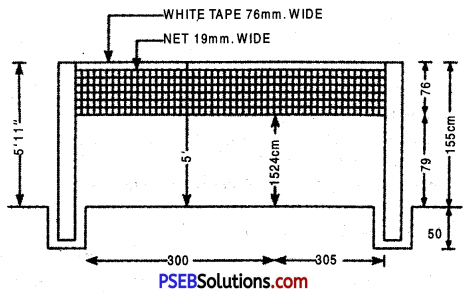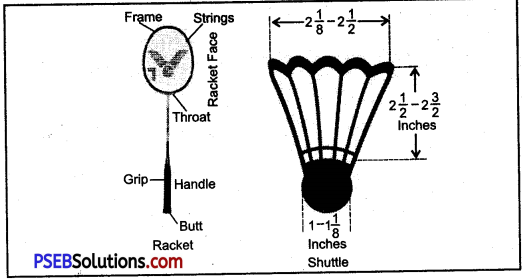Punjab State Board PSEB 11th Class Sociology Important Questions Chapter 1 Emergence of Sociology Important Questions and Answers.
PSEB 11th Class Sociology Important Questions Chapter 1 Emergence of Sociology
Multiple Choice Questions
Question 1.
Who said that Sociology is the queen of other sciences?
(a) Comte
(b) Durkheim
(c) Weber
(d) Spencer
Answer:
(a) Comte.
Question 2.
Whose words are these : “Sociology is the illegitimate child of two languages.”?
(a) Maclver
(b) Jinsberg
(c) Bierstdt
(d) Durkheim.
Answer:
(c) Bierstdt.
Question 3.
Which of these is not the follower of synthetic school of Sociology?
(a) Durkheim
(b) Weber
(c) Hobhouse
(d) Sorokin.
Answer:
(b) Weber.

Question 4.
Which of these is the feature of nature of Sociology?
(a) It is not a practical science but a pure science.
(b) It is not a concrete science but an abstract science.
(c) It is not a neutral science but an idealistic science.
(d) All of these.
Answer:
(d) All of these.
Question 5.
Why is the subject matter of Sociology not fixed?
(a) Because it is an old science
(b) Because it is a new science
(c) Because background of every society is different
(d) Because social relations are not fixed.
Answer:
(d) Because social relations are not fixed.
Question 6.
Who wrote the book, “Social Order”?
(a) Maclver
(b) Simmel
(c) Robert Bierstdt
(d) Max Weber.
Answer:
(c) Robert Bierstdt

Question 7.
Who divided Sociology in Social Morphology, Social Physiology and General Sociology?
(a) Spencer
(b) Durkheim
(c) Comte
(d) Weber.
Answer:
(b) Durkheim.
Question 8.
Which of these according to Weber is correct?
(a) There is Sociology of general things
(b) Nature of Sociology is general
(c) Sociology is not a special science
(d) None of these.
Answer:
(c) Sociology is not a special science.
Question 9.
…………… In which country the study of Sociology was started?
(a) France
(b) Germany
(c) USA
(d) India.
Answer:
(c) USA.
Question 10.
Who said that the name of Sociology should be kept as ‘Ethology’?
(a) Weber
(b) Spencer
(c) J.S. Mill
(d) Comte.
Answer:
(c) J.S. Mill.

Fill in the Blanks:
1. …………… gave Sociology its name.
Answer:
Auguste Comte
2. The first printed book in Sociology was ………….
Answer:
Principles of Sociology
3. There are …………… schools of thought associated with the scope of Sociology.
Answer:
two
4. Weber belongs to ………….. school of Sociology.
Answer:
Formalistic
5. Durkheim belongs to ………….. school of Sociology.
Answer:
Synthetic

6. The Web of ………….. is known as Society.
Answer:
social relations
7. …………… called sociology as pure sociology.
Answer:
Comte.
True/False:
Question 1.
Max Weber is considered as the father of Sociology.
Answer:
False
Question 2.
The word Sociology was used ffrst time in 1839.
Answer:
True
Question 3.
The book Society was written by Maclver and Page.
Answer:
True
Question 4.
Simmel belongs to Formalistic school of thought.
Answer:
True
Question 5.
There is no contribution of the French Revolution in the Emergence of Sociology.
Answer:
False

Question 6.
Enlightenment period had a great impact on the emergence of Sociology.
Answer:
True
One Word/Line Question Answers:
Question 1.
When and who coined the term Sociology ?
Answer:
Auguste Comte coined the term Sociology in 1839 A.D.
Question 2.
Who said that ‘Sociology is the queen of all the Social Sciences’?
Answer:
Auguste Comte was of the view that ‘Sociology is the queen of all the social sciences’.
Question 3.
Who wrote the book ‘Sociology’ ?
Answer:
The book ‘Sociology’ was written by Harry M. Johnson.

Question 4.
Who wrote the book ‘Society’ ?
Answer:
Maelver has written the book “Society”.
Question 5.
According to Comte, which are the major parts of Sociology ?
Answer:
According to Comte, Sociology is divided into two parts-Social statics and Social dynamics.
Question 6.
Name the two schools regarding the scope of Sociology.
Answer:
There are two schools about the scope of Sociology-Formalistic school and Synthetic school.
Question 7.
Name the major exponents of the formalistic school.
Answer:
Simmel, Vierkandt, Weber etc. are the major exponents of this school.
Question 8.
Name the major exponents of the synthetic school of Sociology.
Answer:
Durkheim, Sorokin, Hobhouse etc. are the major exponents of this school.
Question 9.
What does Sociology study?
Answer:
Sociology studies social relations and social phenomenon.

Question 10.
Who is considered as the father of Sociology?
AnsweR:
Auguste Comte is considered as the father of Sociology.
Question 11.
What is Sociology?
AnsweR:
Science which studies social relations in a systematic way is known as Sociology.
Question 12.
What is Society?
Answer:
According to Maclver and Page, “Society is the web of social relationships.”
Question 13.
Who gave the form of science to Sociology?
Answer:
French Sociologist Emile Durkheim gave the form of science to Sociology.
Question 14.
With which two words Sociology is made up?
Answer:
Sociology is made up of two words i.e. Latin word ‘Socio’ and Greek word ‘logos’.
Vary Short Answer Type Questions
Question 1.
Meaning of Sociology.
Answer:
Science of Sociology is known as Sociology. In Sociology, groups, institutions, organisations, associations, mutual relations of individuals are studied. Most importantly it studies all these in a scientific way.
Question 2.
Name the Founding fathers of Sociology.
Answer:
Auguste Comte : He started Sociology.
Emile Durkheim : He converted Sociology into a science.
Karl Marx : He gave conflict theory to Sociology.
Max Weber : He gave action theory and many other concepts to Sociology.
Question 3.
Subject matter of Sociology.
Answer:
In the subject matter of Sociology many concepts are included and these are social order, social institutions, social process, social codes, cultures, civilization, social organisation, socialisation, status, role, social control,’ social problems etc.
Question 4.
Meaning of Society
Answer:
According to Maclver, ” Society is the web of social relationships.” It means that society is the organisation of specific type of social relations which exist among the people who live in a particular period for a long time.

Question 5.
Formalistic School.
Answer:
According to the thinkers of this school, Sociology only studies the forms of social relationships, that’s why it is a special Science. No other science studies the forms of social relationship, only Sociology does such study.
Question 6.
Synthetic School.
Answer:
According to the exponents of Synthetic school, Sociology is a general science because its subject matter is quite wide. Sociology studies whole of society and the concrete form of social relationships.
Question 7.
Importance of Sociology.
AnsweR:
- Sociology studies whole of society, by considering it as a single unit.
- Sociology helps us in understanding and solving the social problems.
- Sociology clearly helps us in understanding different cultures.
Question 8.
Sociology is a Science.-How ?
Answer:
Yes, Sociology is a science because it studies its subject matter with objectivity while studying social relations. That’s why we can call it a science.
Question 1.
Meaning of Sociology.
Answer:
French philosopher, Auguste Comte is known as the Father of Sociology. Sociology has been made by two words-Socio and Logos. Meaning of Socio is society and meaning of Logos is Science. So, literal meaning of Sociology is Science of society. In simple words, Sociology scientifically studies groups, institutions, communities, associations and inter-relations of humans. It also studies the customs, traditions, mores which exist in social relations. Except these, it also studies the culture.

Question 2.
Literal Meaning of Sociology.
AnsweR:
The word Sociology is an English word. The word Sociology has been taken from two words ‘Socio’ and ‘Logus’. Socio is a Latin word whose meaning is Society and Logus is a Latin word whose meaning is Science. In this way the meaning of Sociology is Science of Society which studies the human society.
Question 3.
Who is the father of Sociology and in which year name Sociology was given by him ?
Answer:
French philosopher Auguste Comte is known as the Father of Sociology. His book ‘Positive Philosophy’ was published in six volumes between 1830 to 1842. In this book he imagined a science which should study society. To this Science he gave the name of Sociology in 1839.
Question 4.
What is Scientific Method ?
Answer:
Scientific method is the method which helps a Scientist to study any phenomena systematically and in proper sequence. In Scientific method we should select that problem which is able to be studied with this method. We should find out literature related with that problem and that should be checked.
Formulation of Hypothesis is necessary with this so that we can make our thesis on the basis of this. Except that in Scientific method we have to collect data with a proper planning so that it can be analysed and processed. Observation is the main base of Scientific method. That’s why any technique can be used and later on after recording data should be analysed and studied.
Question 5.
Is Sociology a Science ?
Answer:
Yes, Sociology is a Science because Sociology uses scientific methods to collect facts. It not only collects facts of the problem about ‘what is’ but it also studies why and ‘how’. It also tries to know about reality of Sociology. Predictions done by Sociology are proved correct. In this way from this it is clear that Sociology uses scientific method to study anything. That’s why it can be called as a Science.

Question 6.
Lack of Experimental method in Sociology.
Answer:
Subject matter of Sociology is society and it studies the human behaviour and relationships. Human behaviour is quite different from each other. If we will take relations of brother-sister, mother-father or mother-son then we will not find same behaviour of two brothers or sisters.
This type of difference does not exist in natural sciences but they have universality of nature of any element. That’s why Experimental method can be used in natural sciences because result of mixing two chemicals will be the same in the whole world. But this type of stability is very less in Sociology. That’s why we cannot use experimental method in Sociology.
Question 7.
Sociology is an independent Science. How ?
Answer:
Different Sociologists have different views about this. According to them Sociology is an independent science because it studies the whole society and it is based on sociological theories to understand its subject matter. It has its own point of view. The supporters of this view are Lesterward, Giddings, Barner etc.

Question 8.
Sociological concepts are not Universal. How ?
Answer:
Sociological concepts cannot be proved correct everywhere. It is so because one society is quite different from other society and change comes in every society at different speed. We cannot generalize the relations of sociology by studying it. That’s why in the absence of rules or concept it cannot be called as a science and if it is not a science then its concepts are not universal.
Question 9.
Scope of Sociology.
Answer:
Society is a web of social relationships and sociology studies it scientifically. In its study sociology, studies all the social classes, institutions, associations etc. About the scope and subject matter of sociology there are two types of views.
1. Formalistic School : According to this it is a special science which studies the forms of social relations. Main supporters of this school are Simmel, Weber, Small, Vierkandt, Von Wiese and Ward.
2. Synthetic School : According to this school it is a general science which studies society as a whole. Main supporters of this school are Durkheim, Hobhouse and Sorokin.
Question 10.
Lack of objectivity in Sociology.
Answer:
Sociology lacks objectivity because the Sociologist who is studying anything, is a member of any group or society and he is definitely affected by the values of that group or society. It is almost impossible for him to remove that effect and’bias can come in his study. That’s why there is lack of objectivity in Sociology.
Question 11.
Sociology cannot predict. Comment.
Answer:
Sociology cannot predict like Natural Sciences. It studies the social relations and proceses. These relations and processes are different in each society and they keep changing all the times. Because of this changing nature of subject matter of Sociology it is unable to predict. It cannot predict in that way the way in which Natural Sciences are predicting. It is so because Sociology is related with behaviours or forms of social relations which are unstable. They keep changing. So by looking at the nature of social relations we can say that we cannot bring reality in the study of social relations.

Question 12.
Who was Auguste Comte ?
Answer:
Auguste Comte is also known as the Father of Sociology. In 1839, Auguste Comte told that the way in which natural phenomenon are studied by different social sciences, in the same way there is a science which studies society and he gave it the name of Social Physics. Later on he changed the name of Social Physics to Sociology. Comte gave many concepts to Sociology like the Theory of Social Evolution, Hierarchy of Sciences, Positivism etc.
Question 13.
Write about development of Sociology in Europe.
Answer:
In the beginning of 19th Century, great French philosopher Auguste Comte gave the name of Social Physics to science of society. In 1839 he changed its name – to Sociology. J.S. Mill started sociology in England in 1843. Herbert Spencer, in his book Principles of Sociology, studied society in a scientific way.
First of all, Sociology started as an independent subject at Yale University, USA in 1876. Durkheim, through his books, developed Sociology as an independent subject. In the same way Karl Marx and Max Weber gave many theoriec to Sociology and developed it as an independent subject.

Question 14.
Enlightenment period and Sociology.
Answer:
The Enlightenment period played a very important role in the emergence of Sociology. This period started in the beginning of 18th century and remained there during the whole century. Many thinkers of this era like Vico, Montesquieu, Rousseou etc, gave many views and these views keep a very important place in the birth of sociology.
They all were of the view that the phenomenon must be studied in a scientific way and believed that everything should have a reason. They also believed that society should be developed on the basis of empirical investigation. In this way these vieWs brought forward a new social idea and earlier Sociologists came out of this idea.
Long Answer Type Questions
Question 1.
Describe the different stages of the origin of Sociology.
Answer:
An individual is a thoughtful person. Right from his early childhood, there is an urge in him to know about his surroundings. Humans collectively tried to face the problems which came in front. Due to interactions between different individuals, social relations came into being and consequently new groups came into being. Human behaviour is controlled by different customs, traditions, norms and values. In this way humans have tried to understand different aspects of society in one way or the other.
Stages of Origin and Development of Sociology:
The origin and development of Sociology can be broadly divided into four stages :
1. First Stage:
The development of Sociology can be better understood by dividing it into two parts.
(i) Vedic and Epic Era. In general sense, the origin of Sociology is widely considered to be in Europe but its history itself tells us that different saints toured India, studied the problems of people and did lot of brainstorm about this. They, as a result, developed the Varna system in Indian society. This thing is explained in the oldest religious book of the world i.e. Rigveda.
Vedas, Upnishdas, Puranas, Ramayana, Mahabharata, Geeta etc. are the scriptures through which Sociology started in India. Except Varna System, Ashrama System, Four Purusharthas, the concept of debt (Rina), joint family etc. are the institutions developed in India. Except these religious scriptures, lot of sociological explanation, about the prevailing Indian problems, is given in the Arthashastra written by Kautilya.

(ii) Studies of Greek Scholars. After Socrates, Plato (427-347 B.C.), Aristotle (384-322 B.C.) were the Greek scholars. Plato wrote ‘Republic’ and Aristole wrote ‘Ethics and Politics’ in which they described in detail about family life, customs, traditions, status of women etc. Plato studied around 50 and Aristotle studied around 150 large and small states and gave their views about political, social, religious and economic conditions prevailing during those days.
2. Second Stage:
The age from 6th century to 14th century is considered the second stage of development of Sociology. During the beginning of this stage, help of religion and philosophy was taken to understand social problems. But during 13th century, efforts were made to understand social problems on logical basis. Thomas Acquires and Dante clarified the causal-effect relationship to understand social events. In this way, the rough sketch of Sociology was made during this age.
3. Third Stage:
Third stage of the development of Sociology started in 15th century. During this age, a number of great philosophers used scientific method to study social events. Hobbes, Locke and Rousseau gave Social Contract Theory. Thomas Moore in his book ‘Utopia’, Montesque in his book ‘The Spirit of Laws’ and Malthus though his ‘Theory of Population’ studied social events and gave their contribution in the development of Sociology.
4. Fourth Stage:
Great French scholar Auguste Comte, in the beginning of 19th century, gave the name of ‘Social Physics’ to Sociology. In 1838 A.D., he changed this name to Sociology. He is also known as the ‘Father of Sociology’.
J.S. Mill in 1843, started Sociology in England. Herbert Spencer in his book ‘Principles of Sociology’ and ‘Theory of Organism’ studied society through scientific method. First of all at Tale University’ in U.S.A., the study of Sociology started as an independent subject.
Emile Durkheim gave gregt contribution in the development of Sociology as an independent subject. Max Weber, Karl Marx and other sociologists gave many sociological theories. Presently in almost all the countries of World, it is trying to collect new knowledge as an independent subject.

Development of Sociology in India:
The process of development of Sociology in India can be divided into many parts :
1. Development of Sociology in Ancient India. The origin of Sociology in India came about during the ancient times. Maharishi Ved Vyas compiled four Vedas and created the epic of Mahabharta. Ramayana was also written. Except these, Upnishads, Puranas and Smritis throw a great light on ancient Indian Philosophy.
From all these scriptures, it is quite clear that the ideology and philosophy during the ancient India was of topmost quality. From these scriptures, it is also clear that the Indian social problems, needs, events, values, facts, ideals, beliefs etc. were deeply studied. Many social institutions which exist in present age, were actually originated during the ancient age.
Varna, Ashrama, Purusharthas, Religion, Samskaras, Joint family etc. are few of them. Arthashastra of Chanakya, Manu Smriti and ‘Niti Shastra’ of Shukracharya throw a great light on the customs, values, ideals etc. of ancient times.
In this way it is clear that Sociology in itself, in India, originated during the ancient age. During the Medieval age, India was ruled by the Muslims and Mughals. We can get a great deal of knowledge, through the writings of the era, about the prevailing ideology, institutions, values, customs etc.

2. Formal Establishment Era of Sociology:
The age between 1914 A.D. to 1947 A.D. is considered as the formal establishment era of Sociology in India. First of all the work of teaching Sociology at Graduate level started in 1914 A.D. in Bombay University. From 1919 A.D. onwards, the work of teaching Sociology at post-graduate level was started by ‘Patric Geddes’.
Famous Sociologist ‘G.S. Ghurye’ was one of his students. Due to the efforts of Prof. Vrijendranath Sheel, the work of teaching Sociology started in Calcutta University in 1917 A.D. Famous Sociologists Dr. Radha Kamal Mukharjee and Dr. D.N. Majumdar were his students. Yet this development till 1947 was quite slow but even then, the work of teaching Sociology was already on in almost all the universities.
3. Expansion Era of Sociology:
After the Independence in 1947, most of the Indian Universities gave their sanction to teach Sociology as an independent subject. Presently, this subject is taught in almost all the colleges and universities all across India. Except at University level, many Sociological research works are going on in different institutions.
Tata Institute of Social Sciences Mumbai, Institute of Social Sciences Agra, Institute of Sociology and Social Work Lucknow, I.I.T Kanpur and I.I.T Delhi are fevy of the major institutions in the country where Sociological researches are going on. With these, the Sociological methods and knowledge are continually increasing.

Question 2.
Briefly describe about French Revolution and Emergence of Sociology.
Answer:
Social thought is as old as society itself, yet the. origin of Sociology is traced back to 19th century Western Europe. Sometimes Sociology is called the child of the ‘age of revolution’. The revolutionary changes in the preceding three centuries had decisively changed the way people lived thereby paving the way for the emergence of Sociology as we have today.
Sociology took birth in such a climate of social upheavel. The roots of the ideas developed by the early sociologists lie in the then social conditions that prevailed in Europe.
The modern era in Europe and the conditions of modernity were brought about by three major processes-The Enlightenment, The French Revolution and the Industrial Revolution. Sociology was originated due to the changes brought about by these three processes. The French Revolution and the Emergence of Sociology
The French Revolution erupted in 1789 A.D. and it marked a turning point in the history of human struggle for freedom and equality. It changed the political structure of European society. It put an end to the age of feudalism and brought forward a new order of society. It replaced the age of feudalism by announcing the arrival of democracy.
Before the French Revolution, French society was divided into three classes. First class or order was clergy. Second order was of nobles or nobility and third order was of common people. Total population of first two orders was around 2% of total but they enjoyed unlimited rights. They never paid any taxes to government. But no rights were given to third order and they had to face whole burden of all the taxes.

Description of all these three orders is given ahead :
1. The First Order-Clergy. In Europe’s social life, Roman Catholic Church was the most powerful and influential institution. Lot of land in different countries was in Church’s possession.
Except this, church used to get ten per cent (tithe) of the total produce of land. Church was cared by the Priest or Clergy which was the first order of society. Clergy was divided into two parts i.e. Upper clergy and Lower clergy. Priests of upper clergy were related with families of nobles and they had actual rights over church’s property.
Most of the part of tithe was also going in their pockets. They were given special rights and they never paid any taxes to government. They were quite rich and used to live a luxurious life. Priests of Lower clergy belonged to families of general classes. They used to perform their duties with complete devotion and honesty. They used to give religious education to people. They used to perform rituals related to birth, marriage, baptism, death etc. They used to check schools of church as well.
2. Second Order-Nobility. Second order of French society belonged to Nobles. They were only 4 lakhs out of 2.5 crore population of France. It means they were less than 2% of the total population. Right from their early times they used to use sword and used to fight for the protection of general masses. That’s why they were known as Nobles of Sword. NobleS were also divided into two parts i.e. Old nobles and New nobles. Old nobles were owners of l/5th of total land of country.
The status of Nobles was hereditary because of which they were known as real and pure Nobles. All of these were feudal loyds. For quite some time, they performed the functions of administration, Judge and military leader. They lived a luxurious life.
They were also given a number of privileges, New Nobles were those nobles who were given this status by Emperor by taking money from them. This class played a great role in the beginning of French Revolution of 1789. After some time, their status also became hereditary.

3. Third Order-Commoners. Only 2% of population belonged to the first and second order but rest of the 98% population belonged to this third order. This was rightless class which included rich industrialists and poor beggars as well. Farmers, middle class, labourers, artisans and other poor people were also included in this class.
These people were not given any type of right. Farmers wanted to eliminate the special privileges of Nobility. That’s why they greatly participated in French Revolution of 1789. Industrialists, businessmen, money-lenders, doctors, lawyers, scholars, teachers, journalists etc. were included in the middle class.
Middle class patronised the French Revolution. Condition of labourers was also not good. They were not only given less wages but they also had to do Begar (forced labour). These people participated in riots due to poverty. They joined the crowd during French Revolution.
Outbreak of Revolution. Louis XVI became the French King and there was a financial crisis in France. As a result, he required money to run the daily affairs of the country. He wanted to levy new taxes on the people. That’s way he was compelled to call a meeting of the Estate General which was the old feudal assembly.
Its meeting was not called during last 150 years. On 5th May, 1789, the Estate Generalmet arid the representatives of third estate wanted that whole of the estate must meet and vote as one assembly. On 20th June 1789, they found that their meeting hall was occupied by the royal guards. But third estate was determined to meet. So it moved to the tennis court to frame a new constitution. This was the beginning of the French Revolution.

One of the most important events of the French Revolution took place on 14th July, 1789 when a mob of Paris including few middle class leaders, broke open the Bastill prison. They set all of its prisoners free. In France, this day is celebrated as an Independence day. Now Louis XVI was the French king only by name.
The national assembly was organised to form a new French constitution. It started to enact laws. Then it adopted the famous declaration of the rights of man and citizen. This declaration declared certain necessary points including equality of all men before law, freedom of speech and freedom of press and eligibility of all the citizens for all public offices.
In 1791, the king tried to run away from France but was captured and was brought back. He was thrown in jail and on 21 January, 1793 he was beheaded in public after he was tried in court and was proved guilty of treason. Then France was declared as Republic. King was guillotined. But after this, a Reign of Terror started in France when a number of nobles, priests and few revolutionaries were beheaded who tried to oppose the government. This reign of terror lasted for three years.
Then in 1795, Directorate was established in France. This Directorate lasted for four years. Then in 1799, Directorate was overthrown by Napoleon. He then declared himself as director and later on the king. He provided a stable government to France and French people. In this way French Revolution came to an end when Directorate was overthrown by Napoleon.

Effects of French«Revolution: French Revolution exerted lasting effects on France and rest of the world which are given below :
1. Major effect of French Revolution was the destruction of old economic system i.e.
Feudalism and the advent of new economic system. This new economic system was capitalism. .
2. All the privileges of the upper class i.e. clergy and nobles were abolished and were taken back by the government. Whole of property of church was confiscated. All the ancient laws were removed and new laws were made by National Assembly.
3. All the men and citizens were given rights of equality and freedom. The term ‘nation’ was given its modern meaning that France was not only the territories but the ‘French people’. From here on the idea of sovereignty come into being. It means the nation’s law and authority is above its own.
4. French Revolution also had great impacts on the world. It inspired the revolutionaries of other countries to work against the existing autocratic monarchs. It also paved way for removal of ancient systems and establishment of new system of democracy. It also gave the slogan of ‘liberty, equality and fraternity’. As a result of French Revolution, many revolutions occurred in Europe and south central America. Finally monarchy was replaced by democracy.
The French Revolution played a great role in the history of human civilization. It completely changed the Europe’s political scenario and European society. The earlier order was replaced by the new order and as a result new economic order also come into being. Many revolutionary changes took place in France as a number of nobles were either killed or were beheaded. As a result, their role in French society came to an end.

A number of laws were made during tenure of National Assembly and the Directorate which brought many fundamental changes in the society. Church was made subordinate to the state and was restricted to take part in the affairs of politics and administration.
Each individual was given certain rights and even laws were made to divide family property among all the sons of family. The French Revolution also exerted a great impact on other countries of the world. A number of political revolutions broke out in different countries during 19th century. Political scenario of those countries was completely changed.
It was the most important factor in the advent of sociology. Many societies were positively affected by these revolutions and it was a main concern of early sociologists. Many early sociologists, who always thought that revolutions only have negative consequences, changed their opinion about revolution.

These sociologists including Comte and Durkheim gave their views about the positive consequences of it especially the establishment of theme of – liberty, fraternity and equality. In this way French Revolution played great role in the emergence of sociology.
Question 3.
Briefly describe about Industrial Revolution and the Emergence of Sociology.
Answer:
The foundation of modern industry was laid by the industrial Revolution, which began in England in the late 18th and early 19th centuries. It brought about great changes in the social and economic life of the people first in England, then in other countries of Europe and later in other continents. It had two important aspects.
1. Systematic application of science and technology to industrial production, particularly invention of new machines and harnessing of new sources of powers. These encouraged the production process and gave rise to the factory system and mass manufacture of goods.

2. New ways of organizing labour and markets on a scale larger than anything in the past were evolved. The goods were produced on a gigantic scale for distant markets across the world. The raw materials used in their production were also obtained from all over the world. Industrialization threw all societies into turmoil that have been relatively stable for centuries.
New industries and technologies changed the face of social and physical environment. Peasants left rural areas and flocked to the towns, where they worked under appalling conditions. Cities grew at a very fast rate. Social problems became common in the teeming cities. The direction of change was unclear and the stability of social order was under great threat.
The first Industrial Revolution was started in the later part of 18th century. But it was merged into the second Industrial Revolution around 1850 A.D. At that time technological and economic progress took some speed with the invention of steam powered ships and engines railways and later on with the invention of electrical power generation.
Time frame of this merger is still debated among historians as they have different opinions about it. Historians believe that the .industrial revolution was one of the most important events in the human history.
Industrial Revolution exerted a great impact on the society. Rural people started to move towards cities where they had to live in unhygienic conditions. Growing population, increasing demand, increasing output led to demand of other markets. It led to the race between big powers to win over colonies from Asia and Africa. Whole of the world order changed. There prevailed a chaos and disorder in the world. During 1800-1850, different classes started agitating for their rights.
The Significant themes of this Revolution which concerned the early sociologists were the condition of labour, transformation of property, industrial city means urbanism and technology and the factory system. Against such background, some thinkers of that time were concerned about building their society anew.
Those who dealt with these problems are considered as the founding fathers of sociology because they were seriously concerned with these problems in a systematic way. Most notable among the thinkers have been Auguste Comte, Herbert Spencer, Emile Durkheim, Karl Marx and Max Weber. All these pioneers came from different disciplines.
Auguste Comte (1798-1857), who is known as the Father of Sociology, argued that the method used in physics should be used for the study of society. Such a study would reveal the laws of evolution and the laws of the functioning of society. Once this knowledge was available, we would be able to build society.

Auguste Comte, who gave sociology its name, identified three stages of human society i.e. Theological (various phenomena were explained in religious terms), Metaphysical (explanations were philosophical) and Positivism (phenomena were explained in terms of the scientific approach to the social world).
The idea of evolution was carried forward in the works of the British sociologist Herbert Spencer (1820-1903). He argued for the universality of the principle of evolution. His view of the evolution of societies is known as Social Darwinism. The credit for developing sociology as an independent discipline and science goes to Emile Durkheim (1858-1917), a French Sociologist.
Durkheim said that sociologists study social facts which are objective and exist in the” consciousness of the collectivity. Thus social fact is exterior to human mind but it puts constraints on human behaviour. Hence social facts do not have their origin in the individual. Further, they should be explained by other social facts, rather than in terms of biological, psychological, environmental or geographical facts.
Among the Germans, the most influential work was of Max Weber (1864-1920). In comparison to Durkheim, Weber said that the sociologist studies ‘social action’ which is an act an individual performs and assigns meaning and the task of sociologist is to understand the subjective meaning of an act. German social thinker Karl Marx’s (1818-1883) ideas were influential in sociology.
He argued that every society was divided into two classes i.e. Haves and Have-nots. He believed that conflict was initiator of change in history. He, therefore, gave central importance to class and class conflict. Thus the development of sociology in France (Comte, Durkheim), Germany (Marx, Weber) and England (Spencer) paved way to development of sociology everywhere in the world.

Sociology thus flowered in precisely those societies that had experienced the most pronounced or greatest social changes. France, Germany and England underwent a truly revolutionary social transformation, and in all these countries the study of Sociology had emerged by the end of 19th century.
![]()
![]()
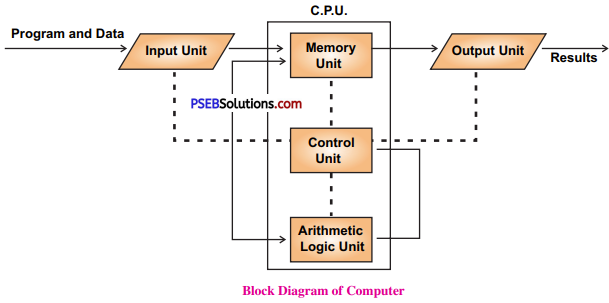
![]()

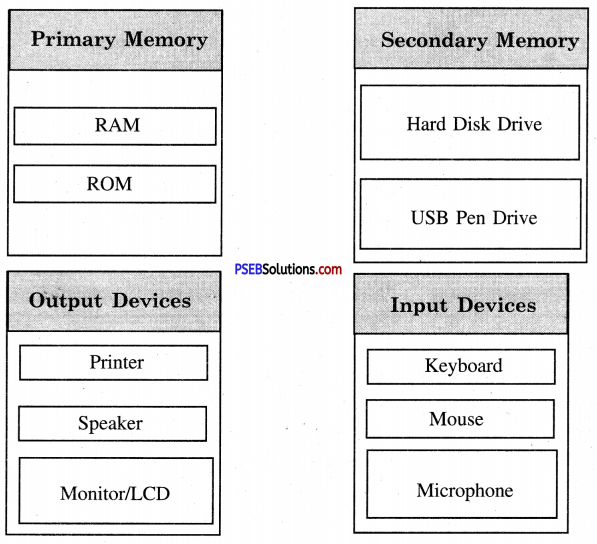
![]()
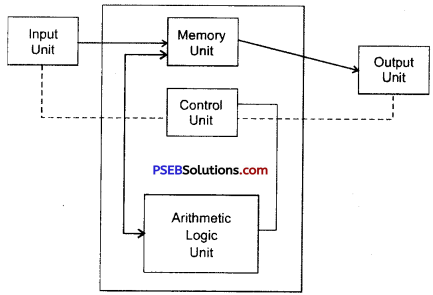
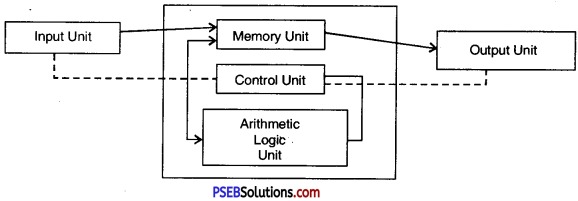

![]()


![]()



